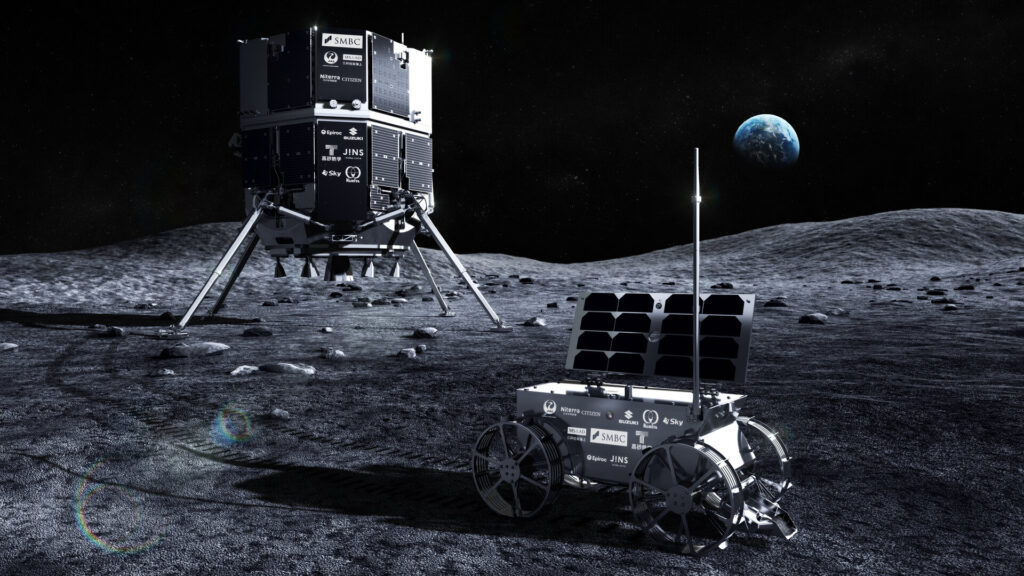
The European Space Agency (ESA) is playing a pivotal role in a groundbreaking lunar mission that will see the first European-built rover land on the Moon. The mission, spearheaded by Japanese lunar exploration company ispace, is set to attempt a landing of its RESILIENCE spacecraft on the Moon no earlier than June 5, 2025. This mission marks a significant step in international lunar exploration efforts.
ESA’s global network of ground stations is crucial in facilitating communication between the RESILIENCE spacecraft and ispace’s mission control. This collaboration underscores ESA’s commitment to supporting international space exploration initiatives.
Mission RESILIENCE: A Leap in Lunar Exploration
The RESILIENCE spacecraft is part of ispace’s Mission 2, titled “SMBC x HAKUTO-R Venture Moon.” Launched aboard a SpaceX Falcon 9 rocket from Cape Canaveral Space Force Base on January 15, 2025, the spacecraft is now poised to land on the Moon’s Mare Frigoris. The mission is controlled from ispace’s Mission Control Center in Tokyo, where a dedicated team monitors the spacecraft’s health and trajectory.
ESA’s network of satellite communication antennas, remotely managed from the European Space Operations Centre (ESOC) in Germany, provides the essential radio link for transmitting and receiving data across space. This collaboration highlights the vital role of international partnerships in advancing space exploration.
ESA’s Strategic Support Network
The ESA’s Estrack network, comprising three 35-meter deep space antennas located in Spain, Argentina, and Australia, along with a 15-meter antenna in French Guiana, supports the mission. Additionally, the commercial Goonhilly Earth Station Ltd in the UK contributes significantly to the extended Estrack network.
The Estrack stations have been instrumental since the launch, supporting RESILIENCE throughout its journey into deep space and back on a low-energy lunar transfer orbit. As the spacecraft prepares for its descent, Estrack will continue to track its progress, ensuring the transmission of crucial telemetry needed for a successful landing.
The First European Moon Rover: TENACIOUS
Once on the lunar surface, RESILIENCE will conduct experiments for its commercial and institutional partners over a two-week period. During this phase, ESA and Goonhilly antennas will continue to facilitate communication, transmitting commands and receiving scientific data from the lander.
Significantly, the mission will deploy TENACIOUS, the first European-built lunar rover. Designed and assembled by ispace EUROPE S.A., a Luxembourg-based subsidiary of ispace, the rover represents a milestone in European space engineering. The project received co-funding from LuxIMPULSE, the Luxembourg National Space Programme, managed by the Luxembourg Space Agency and implemented by ESA.
Operational Strategy and Future Prospects
ispace Europe operates a lunar test yard, a clean room, and a control center in Luxembourg, which will be used to manage the rover’s activities on the Moon. In 2020, NASA awarded ispace Europe a contract to collect lunar regolith samples as part of the Artemis program, and the rover’s operations will contribute to this effort.
Commands for TENACIOUS will be relayed from ispace in Luxembourg to ESOC in Germany, then transmitted through ESA’s antennas to the Moon. The ispace lander will receive these commands and forward them to the rover, ensuring seamless communication. Data from the rover, including images, will be sent back to Earth through the same communication chain.
Implications for Global Space Exploration
This mission not only marks a significant achievement for ispace and ESA but also sets a precedent for future international collaborations in space exploration. The successful deployment of TENACIOUS could pave the way for more European contributions to lunar and planetary exploration.
As the world watches the upcoming landing attempt, the mission stands as a testament to the power of global partnerships in overcoming the challenges of space exploration. With ESA’s support, ispace’s mission could redefine the possibilities of lunar exploration and open new avenues for scientific discovery and technological innovation.
The success of this mission will likely influence future international space policies and inspire further collaboration among space-faring nations. As the countdown to the landing continues, the world awaits a new chapter in lunar exploration, driven by innovation and international cooperation.






